William Key
Case Studies

CIA C3: Integration Of User-Centered Design Into Product Development
The Outcome
I successfully guided a C3 engineering group through the institutionalization of UCD practices into the development lifecycle for all EG products following both agile and waterfall processes. Additional confirmation of the perceived value for my work was a final task added to my contract to create an “Introduction to UX” 2-day course to train all C3 staff on UX fundamentals.
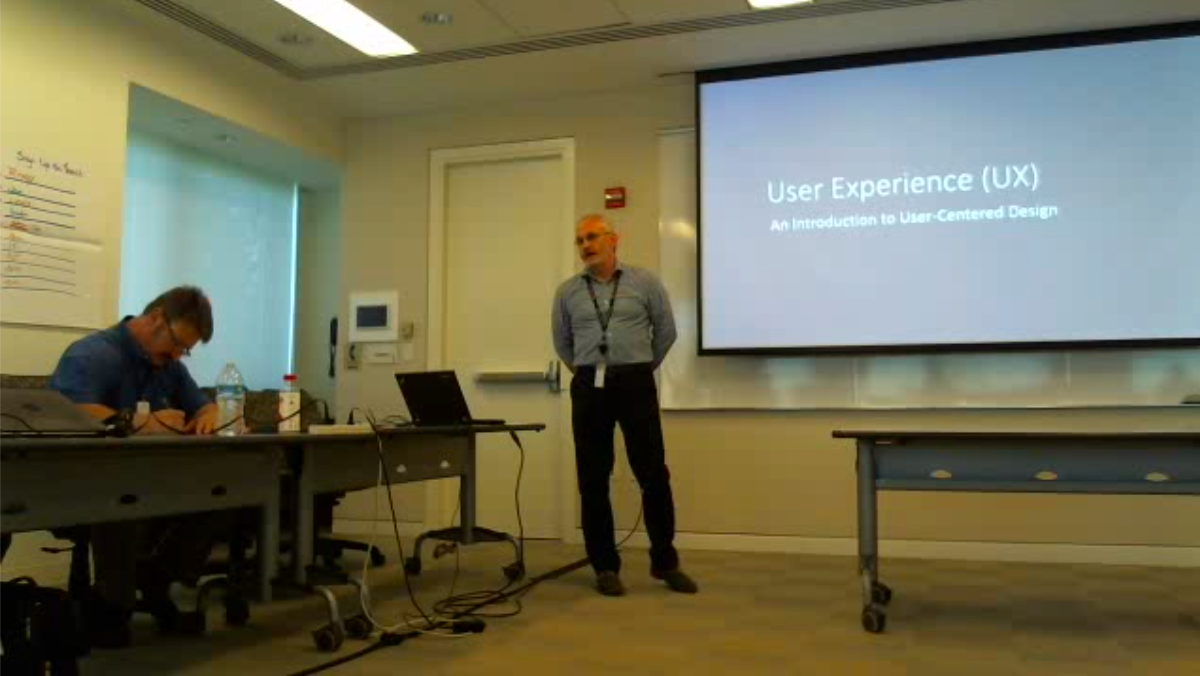
The Client
The Clandestine Communications Center (C3) builds communication products for use by intelligence sources globally. Their products include hardware, software, mobile applications, and web-based applications.
For security purposes, the unique products they create are developed as a one-off or in extremely limited quantities making them extremely costly and time-consuming to build. Also, these products are designed to be unrecognizable as communication devices by anyone other than the intended users.
The Project
C3 spent a large share of their annual budget for technical support specialists to travel the world conducting in-person training for their communication tools. Poor usability often resulted in re-training or products that went unused. Given the significant time and expense to build these products, user rejection was both costly and negatively affected the Agency’s intelligence mission. My initial task was a 90-day contract to conduct usability analysis of several key products and recommend improvements.
My Approach
As the sole UX designer (or designer of any type), I collaborated closely with the engineering teams, project managers, system integrators, the system requirements team, and additional temporary staff engaged at my urging (e.g. a visual designer).
Since it was impossible to interview target users, I persuaded C3 to let me interview Technical Information Officers (TIOs), Engineers, and Systems Requirements staff to better understand the context of use for the C3 products.
Based on insights learned during interviews, I performed a usability analysis for five products. I also identified internal issues that were negatively affecting product design. To provide guidance for engineering staff, I created a 21-page usability checklist as a reference to address many common usability issues for the different types of user interfaces they developed. (A few pages shown below)
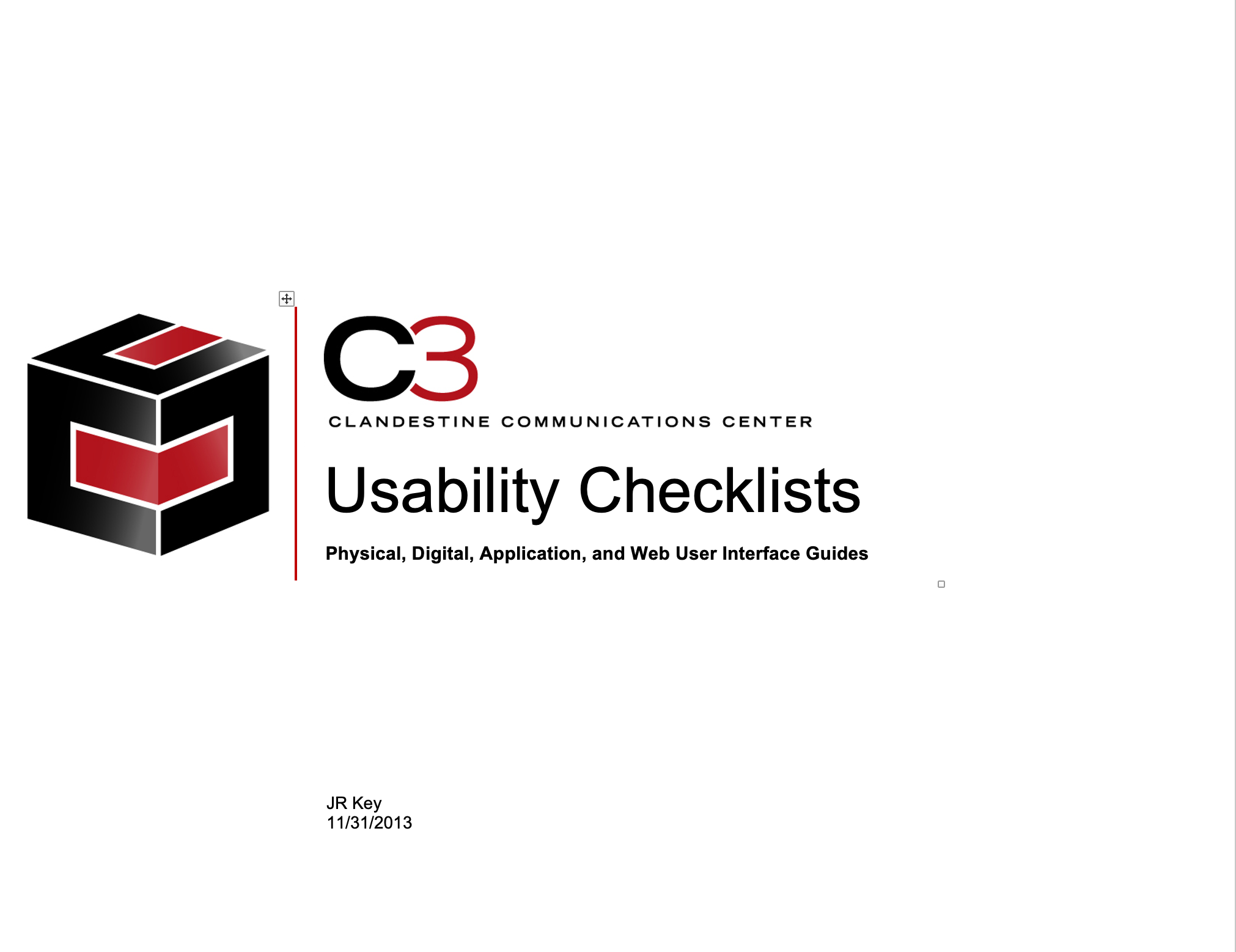

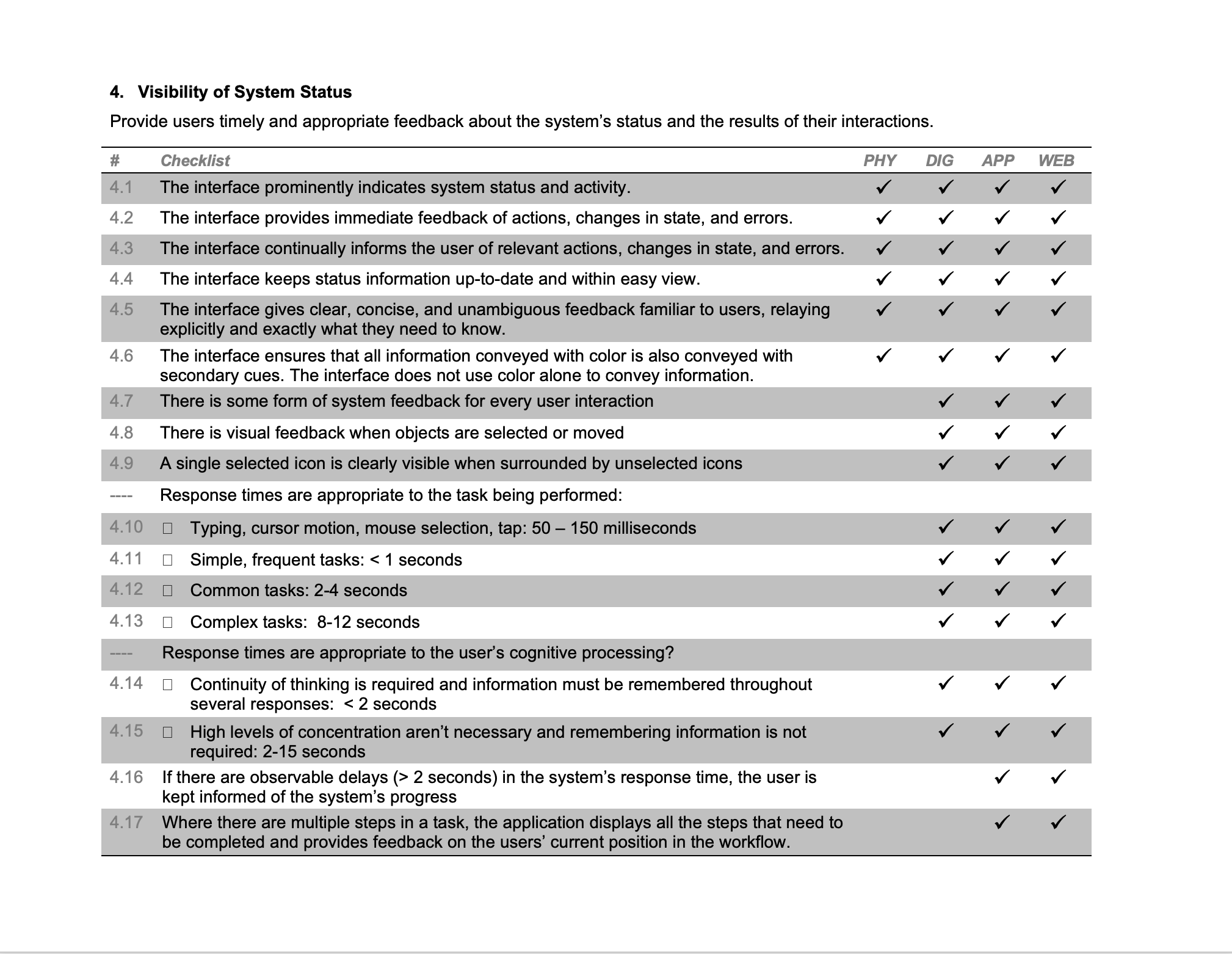
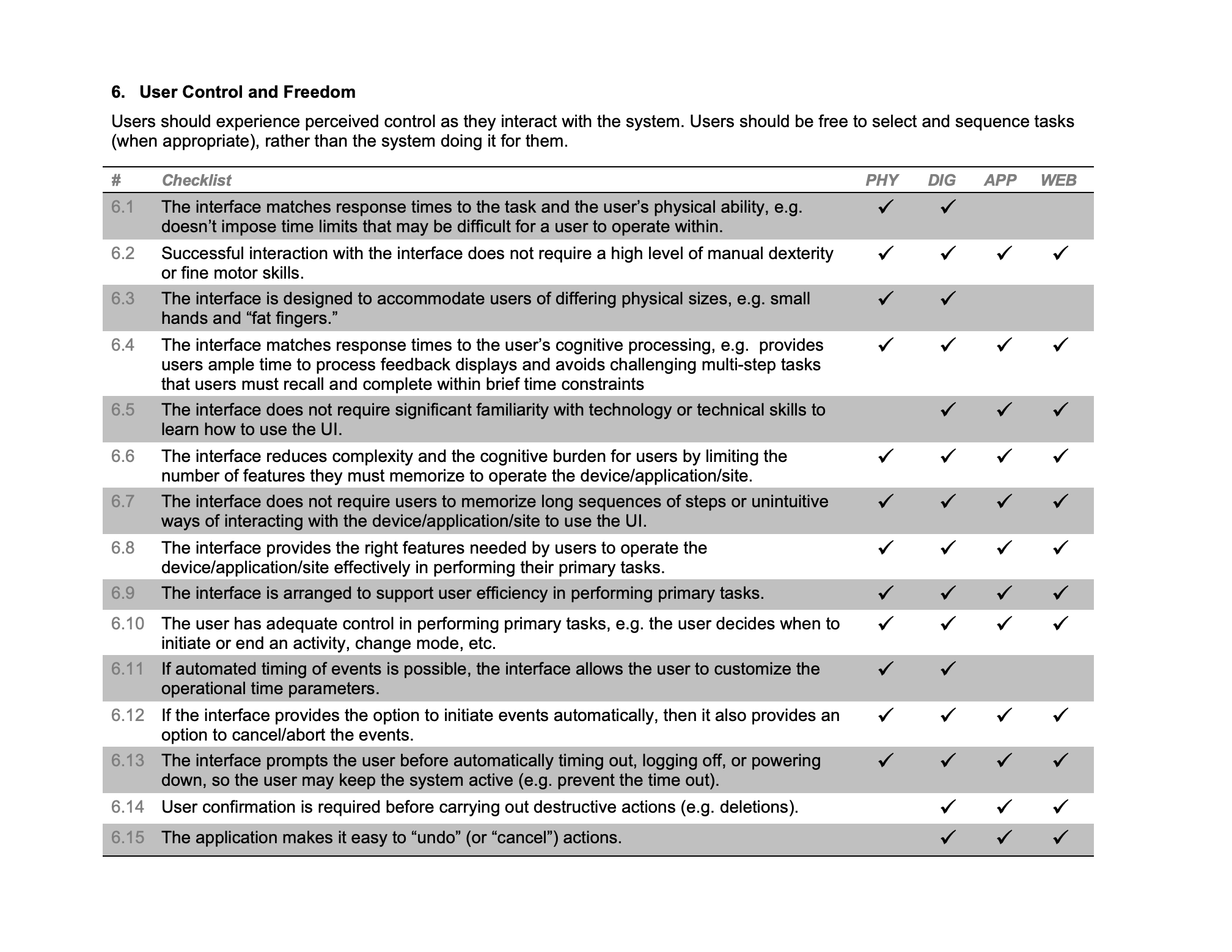
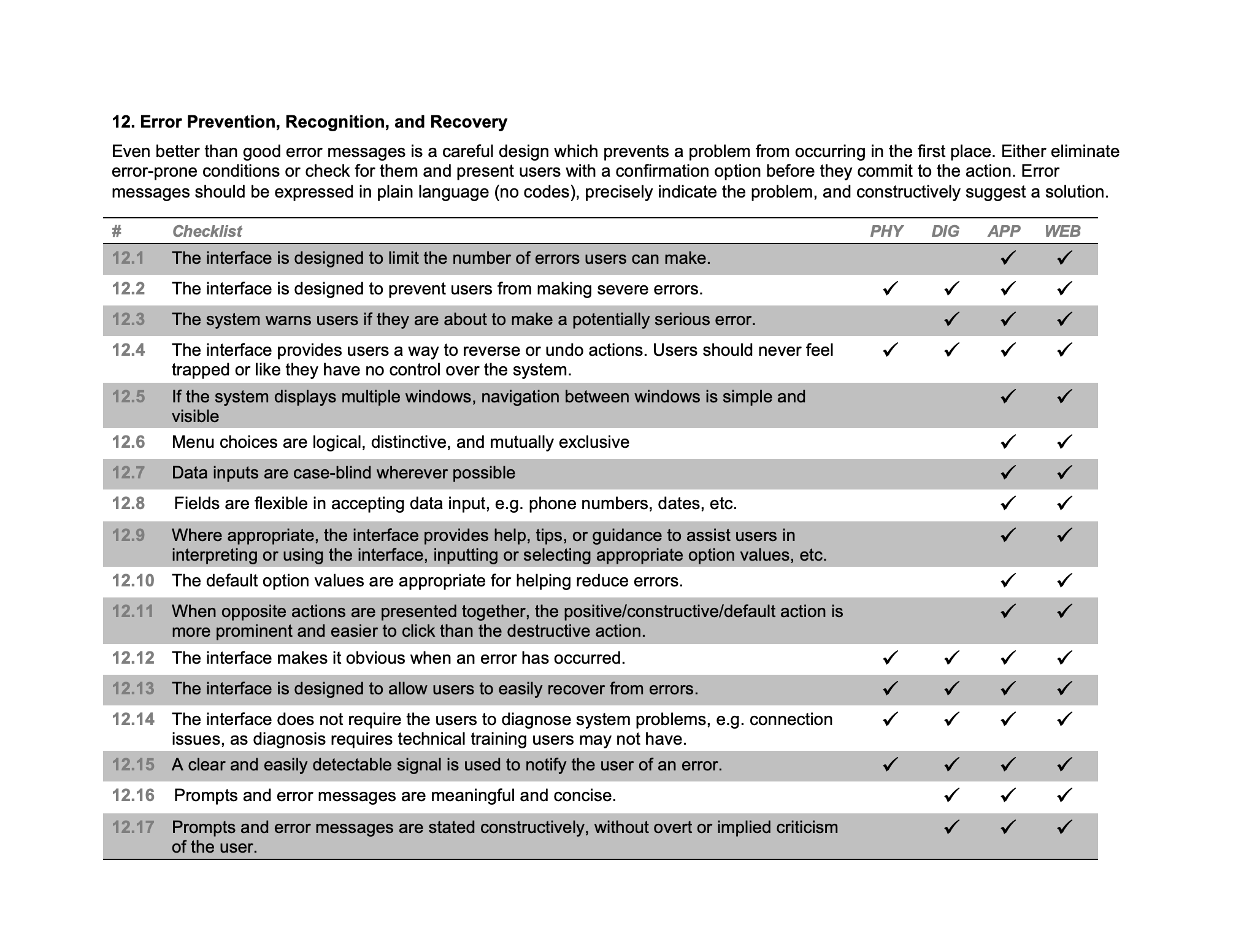
After my initial report, C3 expanded my scope of work to integrate user-centered design processes into all C3 product design and development.
Initially, I was perceived as the outsider brought in by leadership to tell engineers what they were doing wrong. I worked to overcome their early resistance by positioning myself as a partner. Among my many efforts at engagement, I began usability testing and included the engineers to increase their trust in the resulting recommendations. The response was so positive, that I was asked to conduct a workshop to teach other staff the Steve Krug-style DIY usability testing.
During my interviews I learned that the staff groups I interviewed all had different ideas about the target users for C3 products. I also learned that engineers sometimes made design decisions based on wanting to try out a new technology. There seemed to be an assumption that any product they built could be deployed to any asset anywhere in the world without consideration for the target users' very different contexts. To address these assumptions and highlight the resulting problems they presented, I led a persona workshop with engineers so they could realize the importance of being more thoughtful about the target users for each product. (An example persona shown below)
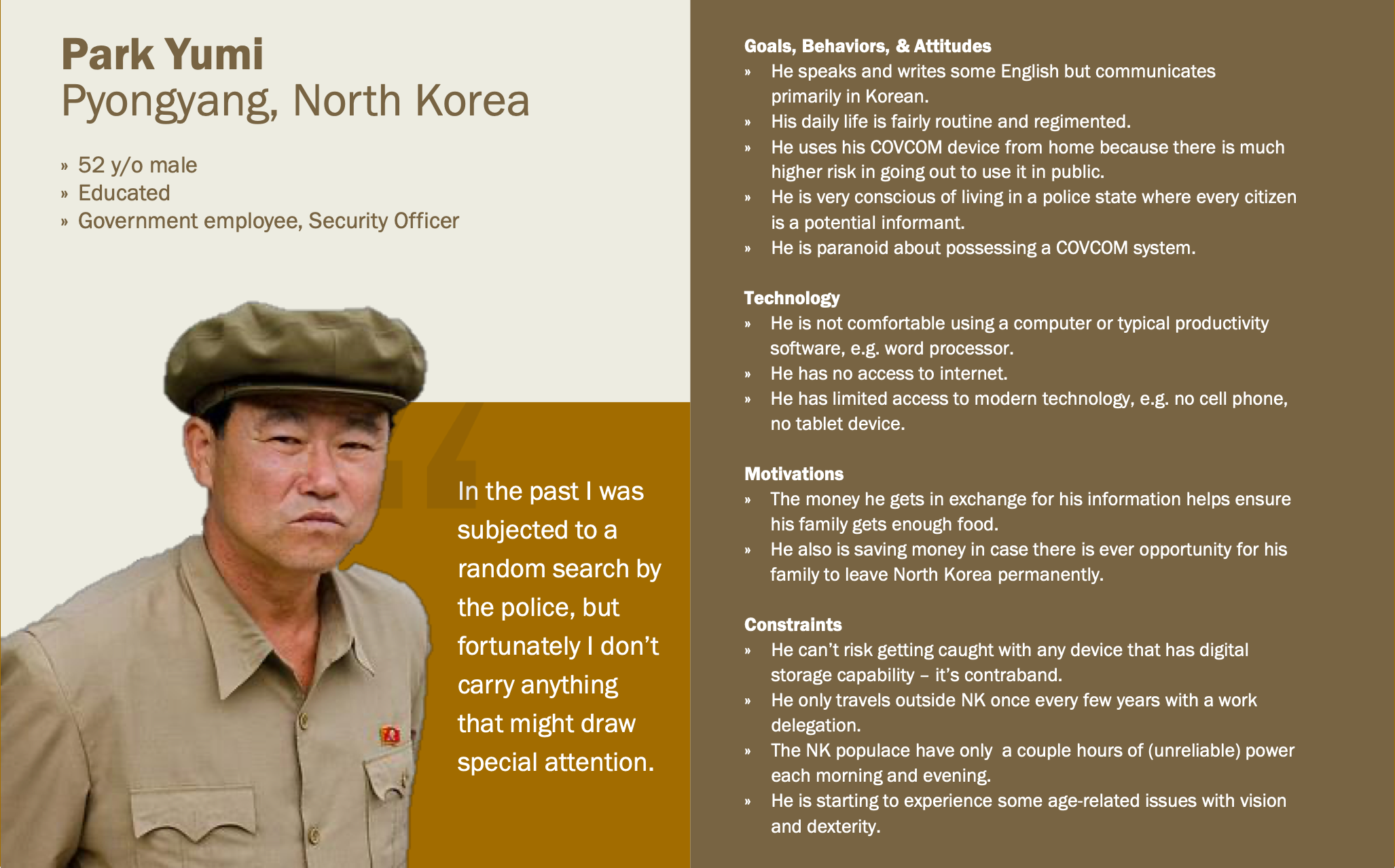
Other engagement activities included running co-design sessions for product UIs, providing guidelines and examples for improving product technical documentation using UX writing and Plain Language, and more. I also created a wall poster of the user-centered design process outside my office and encouraged staff to contribute to the diagram indicating C3-specific control gates, processes, etc. where they fit within the overall product development process. I then added notes for how UX could support product teams at each stage.
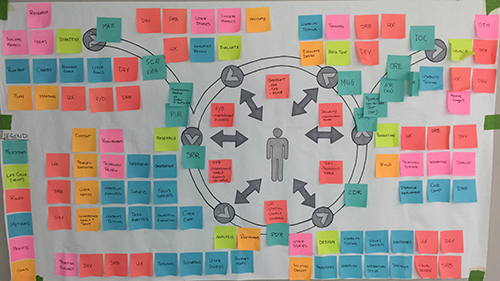
For a product that was a version 2.0 of a communication tool for technical officers, the feedback was enthusiastic but caveated with commentary that the updated product was such a huge improvement that the users were now more aware of the ways it was less "polished" in appearance. This allowed me to bring in a visual designer to elevate the UI design to be on par with commercial software, something C3 had never aspired to do until users began to view the quality of their products more positively. (Style guide excerpt below)
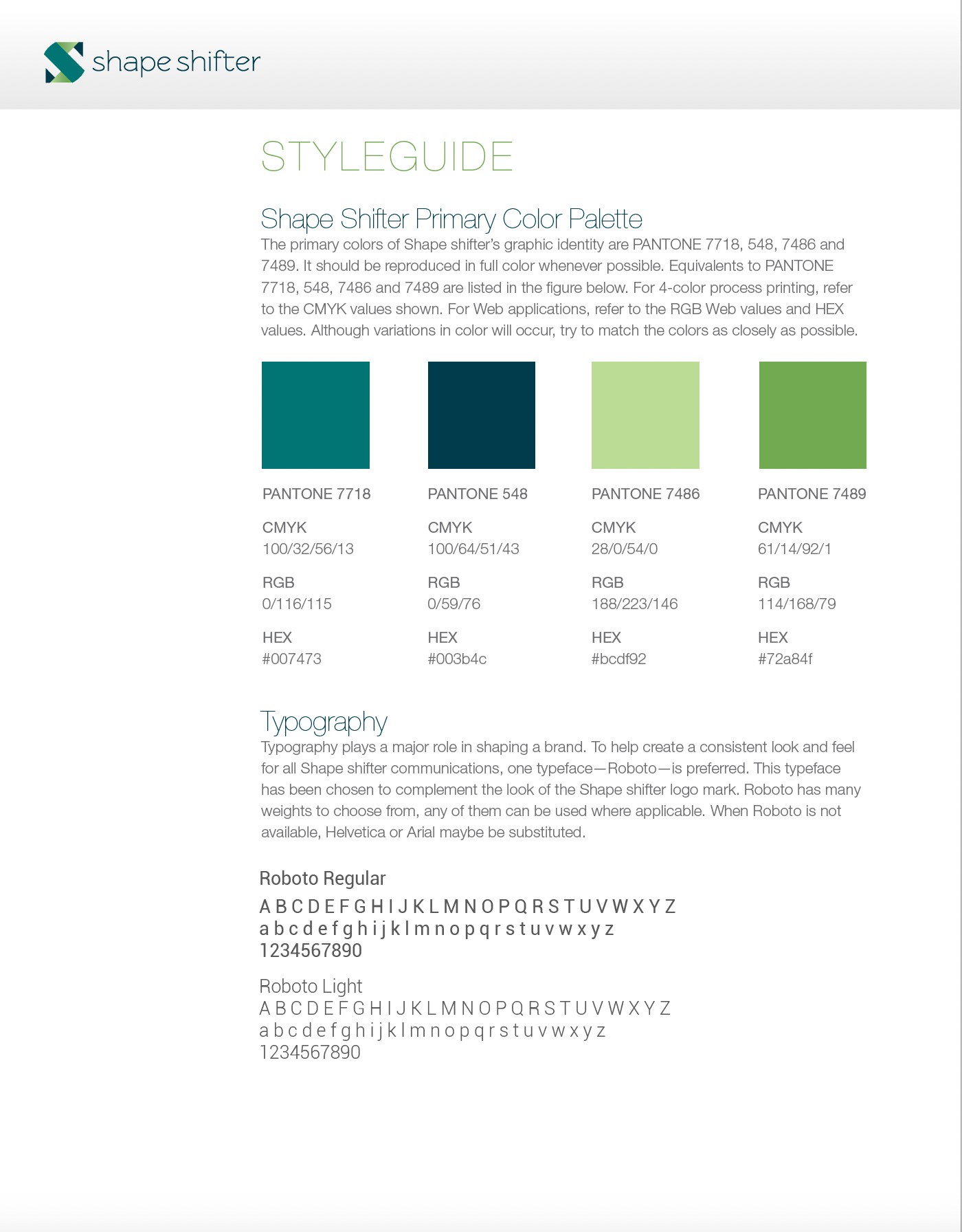
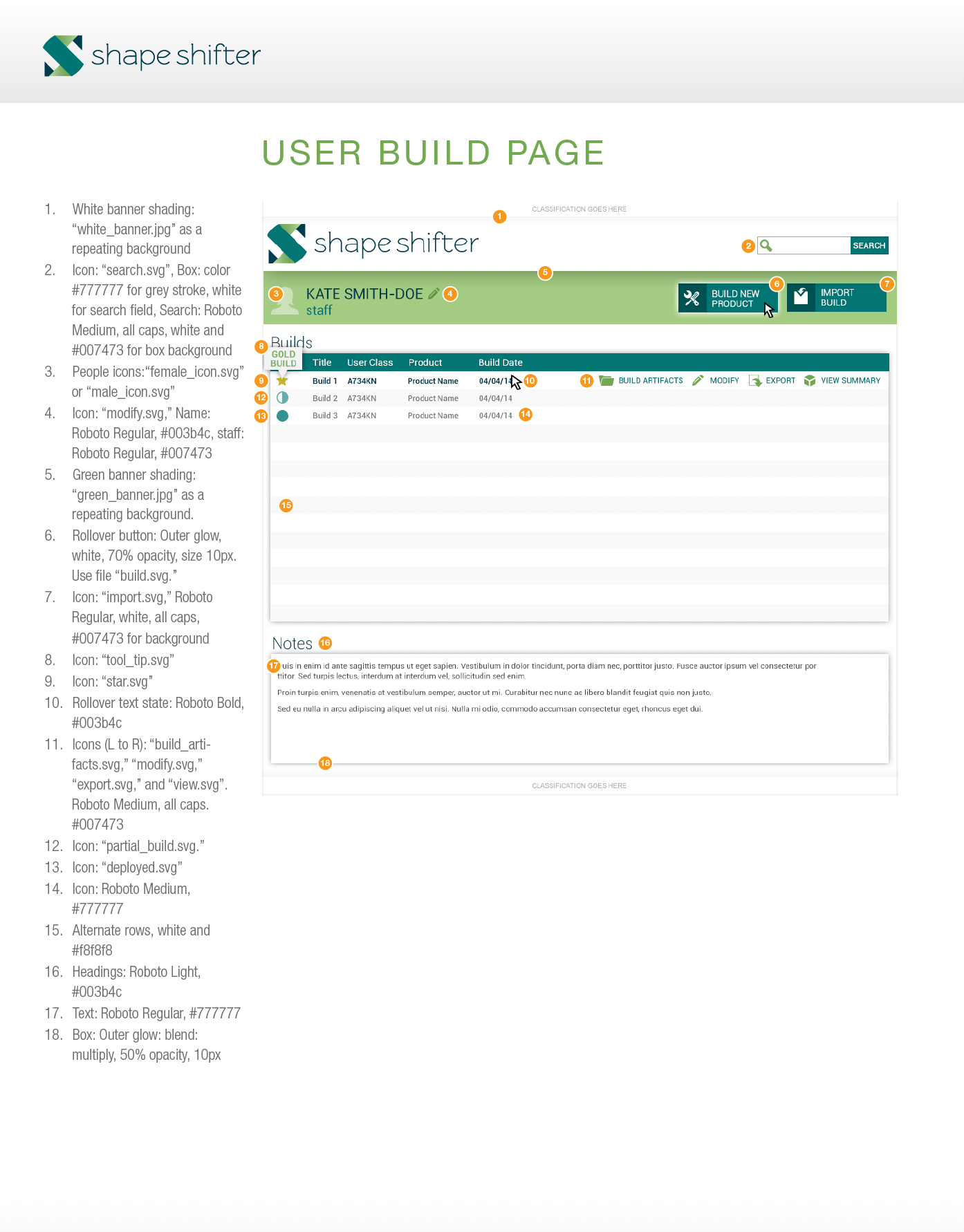
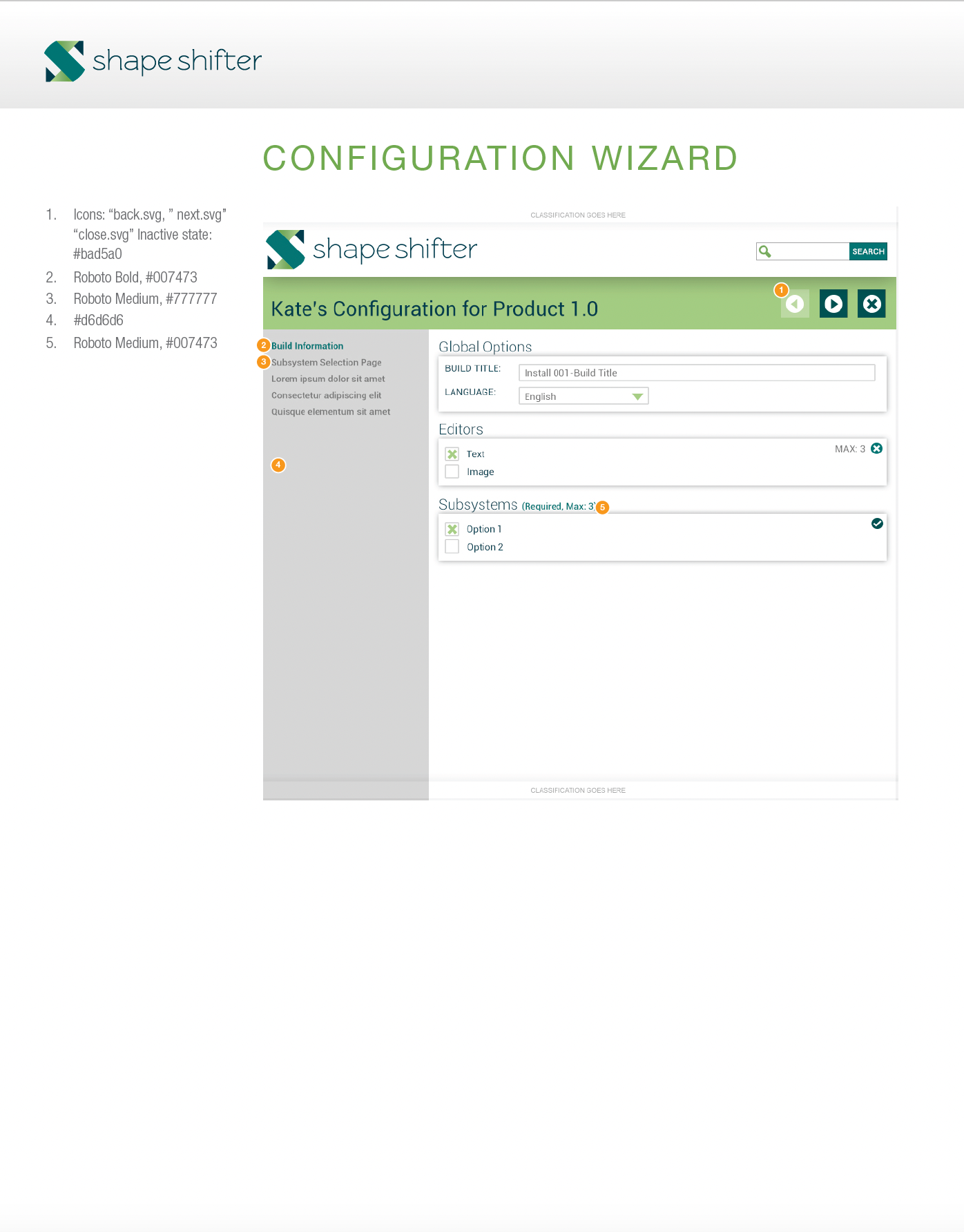
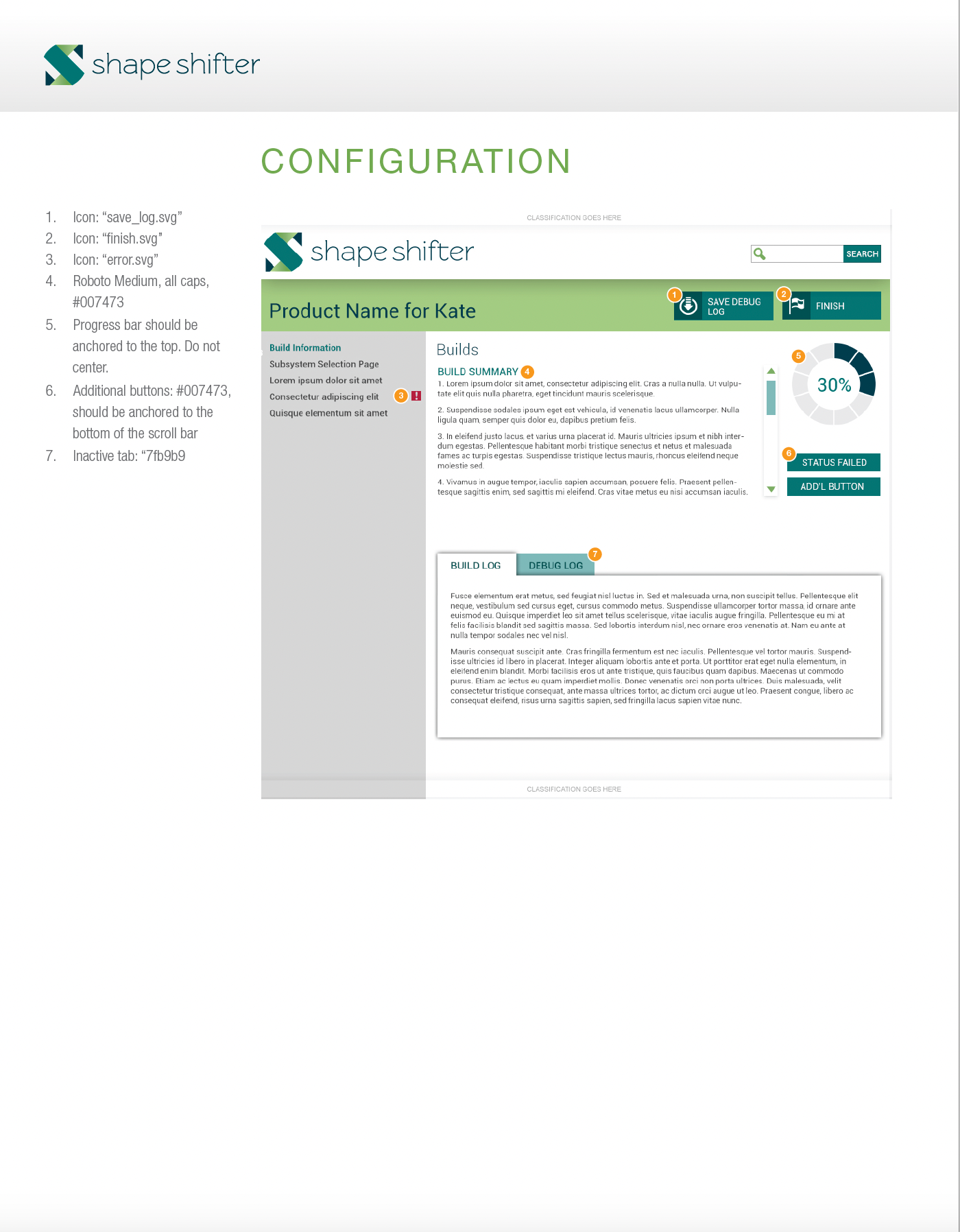
Ultimately, all these activities helped to increase trust and collaboration with C3 staff and contributed to our ability to improve C3 products.
The Challenges and Lessons Learned
The range of work on this contract challenged me to expand my knowledge in areas of Human Factors methodologies, Human-Computer Interaction design principles, and cognitive psychology. I welcomed the opportunity to continue to grow my UX skills and expertise. I also had to hone my soft skills in this role.
After encountering limited interest in reviewing my initial reports, I increased engagement by incorporating story-telling into future reports. Relating specific instances of customer context and usage problems captured attention. They not only read the report to understood specific problems with products but to understand why the problems occurred, e.g. cognitive overload, perceptual issues, attentional issues, etc.
Early on I identified a respected champion who amplified my UX work with the engineers. I also began mentoring staff who wanted to learn more about UX. Ultimately, I was focused on building relationships as much as products.
I learned to word UX recommendations carefully to avoid their misperception as my personal opinion. I found that guidance was better received if I added citations from ACM reports and technical articles. Even sharing that UX is an ISO standard (ISO standards guide engineering work), raised the credibility of my work with the engineering staff.
